
Russians Go Home!
It turned out, to the chagrin of the Soviet Union, that the July 1956 exiling of the ten-year authoritarian leader of communist Hungary, Matyas Rakosi, to the Soviet Union under the thin pretense of “necessary medical treatment” was not enough.
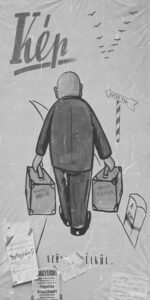
By October 1956 Hungary was in full rebellion.
World War II had not been kind to any of the nations in Eastern Europe, and Hungary was no exception. The Nazi occupation, although shorter than in other countries, operated on steroids. Within a few months over 440,000 Hungarian Jews were shipped to concentration camps and the headquarters of the Arrow Cross (the local Nazis) was busy with imprisonments and torture.
Matyas Rakosi, the soon-to-be-dictator-for-a-decade, returned to Hungary after World War II in 1945 with the Red Army. The Red Army wrenched Hungary from Nazi control and then stayed to keep adherence to socialist ideals on track. The Soviets believed that Rakosi was Hungary’s best hope.
And perhaps Rakosi was the best man for the job – if the job was to execute over 2000 political prisoners, imprison more than 150,000 others, and expel close to 200,000 Hungarians from the Communist Party (thus guaranteeing that they would not have access to the better jobs, food, or apartments). Hungary also experienced the highest rate of inflation in world history, had frequent shortages, a nearly insurmountable amount of war reparations, and wages that were falling further and further behind the rampant inflation.
Rakosi had also triggered the mass-hunt for “Titoists” throughout the Soviet sphere of influence with his engineered execution of rival Laszlo Rajk in 1949, and was an unapologetic Stalinist as the Soviet Union was attempting a program of destalinisation. Still, the Politburo was well aware that whatever his issues, Matyas Rakosi was loyal to the Soviet Union above all else.
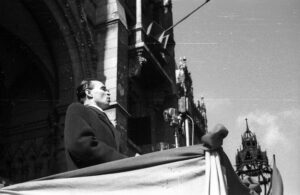
When the leader of the most oppressive regime in Europe was exiled on 17 July 1956, he was replaced by another leader in the same mold – Erno Gero. That decision made the revolution inevitable.
“Mikoyan and I are to blame for suggesting Gero rather than Kadar. We gave in to Gero,” said Krushchev on November third.
The Revolution began on 23 October 1956 when a group of students marched through the streets of Budapest and read their manifesto live on the radio station. Called the Sixteen Points, among their demands were the removal of the Rakosi/Gero cabal, an end to the symbols of Stalinism, the removal of the Soviet troops, and installing a new government under the formerly disgraced Imre Nagy.
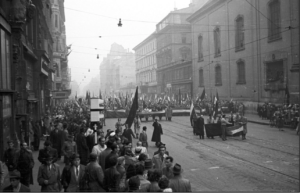
The students were detained.
Protestors from all over converged on the Parliament building, in a group more than 200,000 strong, chanting the words of a censored national song, “This we swear, this we swear, that we will no longer be slaves!” The coat of arms was cut from Hungarian flags and a contentious statue of Stalin, which had been placed on the site of a leveled church, was torn down.
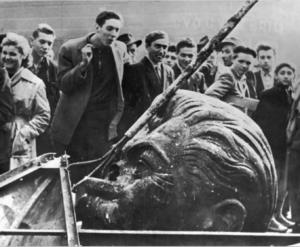
The AVH, Hungary’s secret police, fired on the crowd. What had been protests quickly turned into riots and spread through the city. Gero, whose faith was always with the Soviet Union, requested Soviet military intervention.
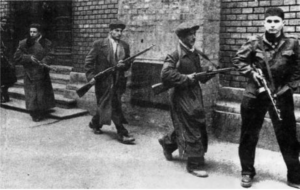
At 2 am on 24 October, Soviet tanks entered Budapest. By noon they were in front of Parliament. The Hungarians quickly mobilized in response. Streets were barricaded and the revolutionaries seized the radio station. Imre Nagy was appointed Prime Minister and Janos Kadar was appointed the First Secretary of the Communist Party, although the Stalinist government didn’t officially fall for another day.
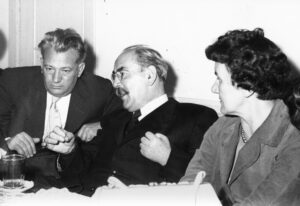
Although at least one of the Sixteen Points had been achieved, the fight was far from over. On 25 October AVH guards began shooting at the crowd assembled below them from the roof of the Parliament building. Enraged, the crowd began shooting back with seized weapons while the command structure of the Hungarian Army disintegrated. There was no longer any path open but violence.
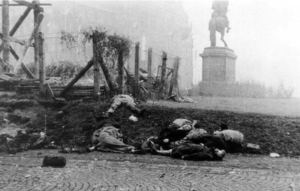
Although the Hungarians fighting were largely young, the experienced General Bela Kiraly managed to escape from prison and organize and lead the resistance. Under his command the irregular troops attacked the Communist Party headquarters, torturing and executing state security and military troops. Soviet war memorials and Soviet symbols were burned. Everywhere the phrase, “Ruszkik haza!” (Russians go home!) was painted on walls and shouted.
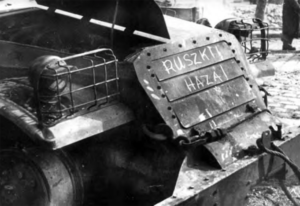
At this time the first part of the most important battle of the Revolution was occurring at the Corvin Passage, a strategic point located near Kilian Barracks and the Budapest radio station. Led by Gergely Pongratz, 4000 troops were holding the critical area and driving the Soviet tanks back. In fact, the Soviets were actively losing that battle to Hungarian irregular troops firing on them from windows and using makeshift molotov cocktails. Soviet over-reliance on heavy artillery, poor intelligence, and bad planning resulted in heavy casualties even as they held a distinct advantage with equipment.
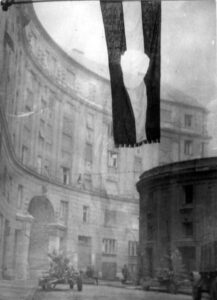
As the fighting raged, Nagy announced a new government on 27 October. This government included non-communist members and made ceasefire negotiations a priority. As the fighting had come to a standstill – the Soviets were more inclined to negotiate, and on 28 November at 12:15 pm the fighting stopped. The Soviet Army began to withdraw. The people of Hungary seemed to have won.
Nagy took to the airways to explain his position – he promised to fulfill the demands of the public: most importantly the dissolution of the AVH and the withdrawal of Soviet troops. On the 29 Nagy moved his offices to the now-vacated Parliament building, and by 30 October Nagy was in full control of the Hungarian government. Stalinist members of the former Hungarian government had fled to the Soviet Union, and lower level members were either in hiding or being executed throughout Budapest. Although the armies were no longer clashing, there was still violence throughout the city.
Even within the Soviet Union it seemed that Hungary had made its point. The Nagy government was still avowedly Marxist, and was not challenging Soviet supremacy in the Communist world. They just wanted the Soviet troops out of Hungary itself. On 30 November the Soviets released a declaration with a predictably long and convoluted name: The Declaration of the Government of the USSR on the Principles of Development and Further Strengthening of Friendship and Cooperation Between the Soviet Union and Other Socialist States. The statement said in part: “The Soviet Government is prepared to enter into the appropriate negotiations with the government of the Hungarian People’s Republic and other members of the Warsaw Treaty on the question of the presence of Soviet troops on the territory of Hungary.” The Soviets were agreeing to negotiate a withdrawal.
But the very next day, in private meetings, that decision was reversed. Khrushchev, mindful of the concessions that had just been made in Poland and the international view of Soviet strength internationally felt that a show of force needed to be made to demonstrate what the USSR was still capable of. The buffer zone that Hungary represented as a Soviet Satellite was also of utmost importance. In addition, conservative elements at home, frustrated by the process of destalinisation, needed to be appeased. Hungary had to be taught a lesson.
The 1 November marked a turning point in the Hungarian Revolution – Russian troops began re-entering Hungarian borders in what was secretly referred to as Operation Whirlwind. Furious, Nagy called Yuri Andropov, the Russian ambassador (and future Soviet leader), for an explanation. The troops were merely there to protect Soviet citizens living in Hungary and to facilitate the removal of the rest of the Soviet Red Army, explained Andropov – whose legacy would bear the epithet ‘The Butcher of Budapest’. Nagy didn’t believe a word of it – and he was spurred to his most daring announcement of the Revolution: Hungary’s withdrawal from the Warsaw pact and its new status as a neutral nation. To add insult to the Soviet injury of this action, Nagy asked the United Nations for help.
Unfortunately, the Suez Crisis was also in full swing at the same time, and the UN was paralyzed. It took until 4 November for a UN vote on the crisis in Hungary, and the Soviets completely ignored the call for them to end their action. There was no consequence levied on them for their refusal to cooperate.
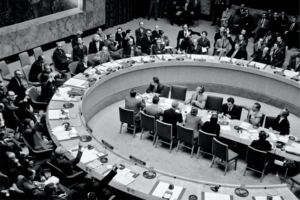
Khrushchev himself was not paralyzed, however, and spent the next three days gathering support from China and other Eastern bloc countries. Among those was a secret visit over the night of 2 and 3 November to Yugoslavia, on Marshal Josip Broz Tito’s island retreat of Brioni.
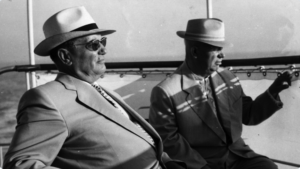
Relations with Tito had only just began to thaw the year before from the 1948 Tito-Stalin split, and Hungary under Rakosi had been an enthusiastic participant in the hunt for the Titoists that were plotting to ruin the international communist movement. But Yugoslavia and Hungary also shared a border, and Tito had his own unquiet population to think about. The last thing the anti-Yugoslav activists needed was an example of a successful revolution so close to home. To this end Tito agreed that Soviet military action was necessary. He also suggested that the Soviets install Janos Kadar as the head of the government, advice Khrushchev readily took.
But one final point of discussion – Tito’s admission that the Yugoslav embassy had been approached to arrange a possible asylum for members of the Nagy government – was glossed over by Khrushchev’s group. It would later prove to be an enormous point of contention.
By 4 November, 17 divisions of Soviet troops, many of whom had been told they were being sent to fight fascists in Berlin, had arrived on the outskirts of Budapest.
“This fight is the fight for freedom by the Hungarian people against Russian intervention, and it is possible that I shall only be able to stay at my post for one or two hours. The whole world will see how the Russian armed forces contrary to all treaties and conventions, are crushing the resistance of the Hungarian people,” said Nagy in a radio address.
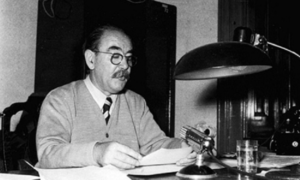
The Soviet troops began to enter the city, and the Nagy government fled to seek asylum. Nagy himself was admitted to the Embassy of Yugoslavia. And there he stayed, from the fourth to the ninth of November, while the second half of the fighting of the Hungarian Revolution raged around him. This time the Soviets would not allow themselves to lose, all resistance would be crushed. And, although it was not instantaneous, that is exactly what happened; most of Budapest was under Soviet control by 8 November.
As the Red Army swept through the city and restored order, 26,000 Hungarians stood trial for their roles during the Revolution. 22,000 were imprisoned, 13,000 were interned, 229 were executed, and over 200,000 refugees were created in October and November of 1956. Membership in the Communist Party went from over 800,000 before the Revolution, to less than 100,000 after.
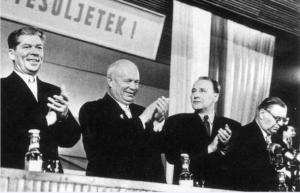
But the Soviet Union would remain firmly in control for the next thirty years.
Imre Nagy’s story was nearly over. Although his asylum at the Yugoslav Embassy was creating considerable international wrangling and headaches, he was still refusing to leave Hungary. With a safe conduct issued by Janos Kadar, the Nagy government families left the Yugoslav Embassy to go to their city flats – but the safe-conduct would not be honored. The driver of the bus was Russian, and Russian military members joined the Hungarian group over the protests of the Yugoslav delegation.
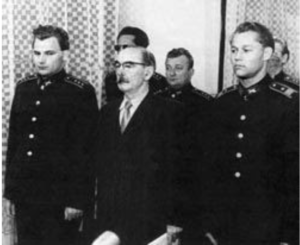
The Hungarians were driven to Romania, where they were tortured extensively before being returned to Budapest for execution in June 1958. The Hungarian Revolution was finally over.
October 23, 1956, is a day that will live forever in the annals of free men and nations. It was a day of courage, conscience and triumph. No other day since history began has shown more clearly the eternal unquenchability of man’s desire to be free, whatever the odds against success, whatever the sacrifice required. – John F. Kennedy
- October 20, 2020
- Hungary
